I would like to thank Darío Moreu, Mabel Pizarro, Manuel Sánchez, Massimiliano Carta, Francisco González, Danny González, and Carlos María Romero for their friendship and the time they dedicated to share with me the stories behind their dissident ties to the Carnival of Barranquilla.
Dissident Practices in the Carnival of Barranquilla: Theatricality, Integration, and Collective Learning
02/09/2024
Since November 2003, UNESCO declared the Carnival of Barranquilla as Oral and Intangible Heritage of Humanity. Before that year, the practices and interests of the private sector (commerce and industry) had already interfered in the arrangements of the carnival, far removed as they are from the unproductive nature and the vital and artistic forces that fuel this festivity.
Barranquilla, also known as "La Arenosa" or "Curramba la Bella," is located on the Caribbean coast of Colombia,1 on the banks of the Magdalena River.2 Its waters flow from the Central Axis of the Colombian Massif, in the Andes Mountain Range, down to its mouth in Bocas de Ceniza. Barranquilla was a free port during the colony, where Indigenous and Afro-descendant population arrived with their carnival traditions, which were forbidden in Cartagena de Indias and Santa Marta. In republican times, with the surge of foreign trade during the second half of the 19th century, the city became the main port of Colombia. Waves of European and non-European migrants arrived in this sea and river port. In this singular melting-pot of cultures—which Glissant would call "creolization"—the carnival grew stronger.
In 2015, the Interdisciplinary Master's Program in Theater and Living Arts (Mitav, for its Spanish acronym) also arrived in Barranquilla through an agreement with the Faculty of Fine Arts of the Universidad del Atlántico. For us professors3 who traveled every two weeks from the capital to this region, it implied the challenge of establishing relationships that would break away from the deafness typical of the centralism that characterizes this country. Since its inception in 2007, Mitav had set out to listen to the vital forces mobilizing those who trusted us to accompany their creative processes. We were looking to position the living arts4 as a post/disciplinary and in/disciplinary field, in which affects—as the effects of life forces on bodies—would be the core of our ethical, aesthetic, and political doings. Through this listening, we learned that the carnival permeates all the practices, expectations and desires of the individual and collective everyday life of this city. It also became clear to us that this festivity is marked by the contradictions of the cultural industry model, which sees it a “source of development,” far from the force of resistance that characterizes carnivals.5
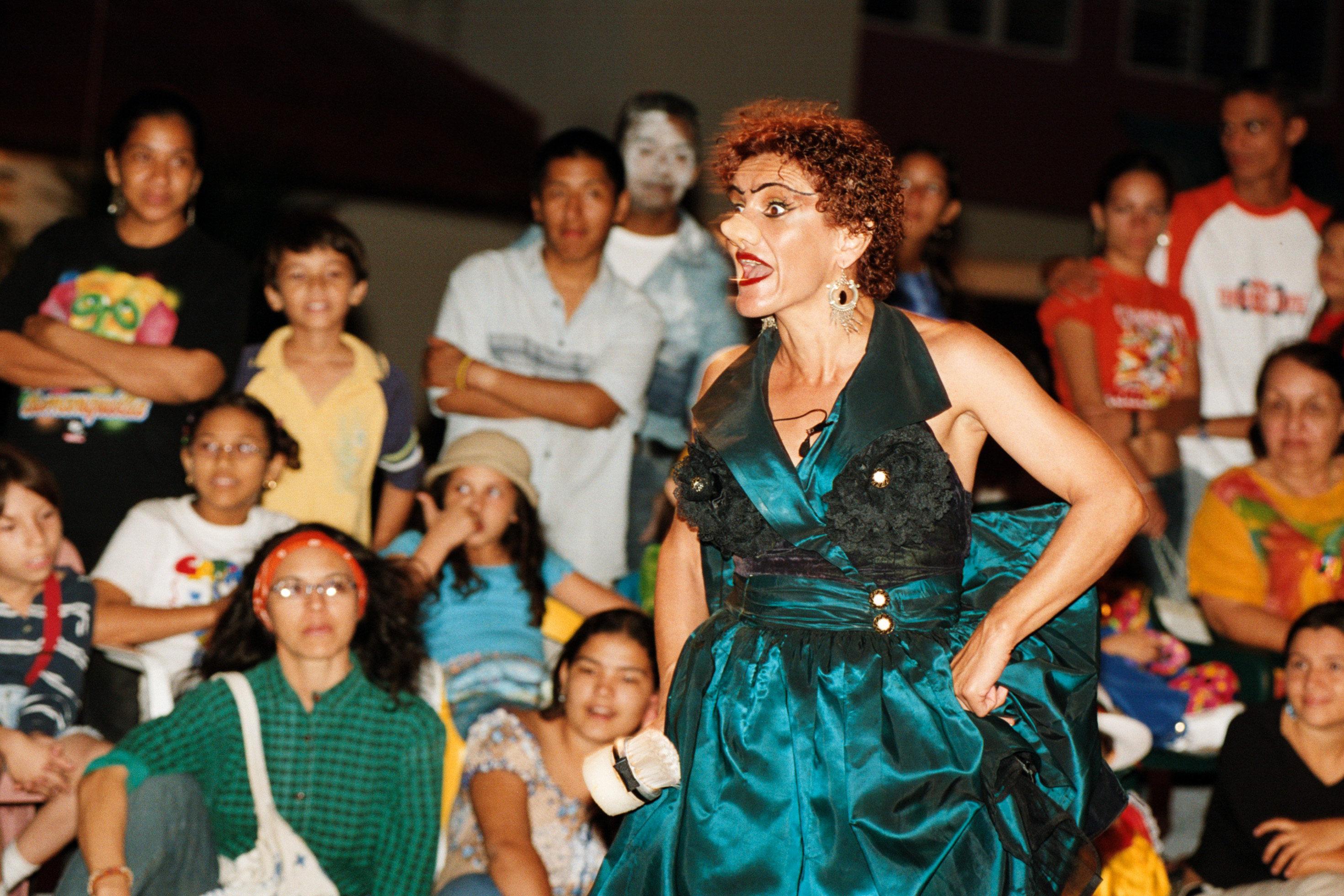
The Need to Dissent
Since November 2003, UNESCO declared the Carnival of Barranquilla as Oral and Intangible Heritage of Humanity.6 Before that year, the practices and interests of the private sector (commerce and industry) had already interfered in the arrangements of the carnival, far removed as they are from the unproductive nature and the vital and artistic forces that fuel this festivity.
The Carnavalada—an open-air theater and carnival festival organized by Darío Moreu7 and Mabel Pizarro of the Ay Macondo Cultural Foundation8—takes up the tradition of the 1950s and 1960s, when carnival was linked to street comedies9 that turned the street into a large theater, attended by audiences of different ages and social backgrounds. Upon their return from Bogota, they took up the tradition of collective costumes (comparsas), which they used until the year 2000 to parade along the Via Cuarenta.10 This avenue hosts the most promoted parades for tourism—advertised by the enterprise Carnaval de Barranquilla SAS. In 2000, Ay Macondo paraded with a comparsa called “Carnavalada,” which gathered the costumes of the five previous years, including the Winged Satyr presented a couple of years before. That year, on the Saturday of the Battle of Flowers, then President Andrés Pastrana was in the box. As their comparsa passed before the president, who bowed as in a greeting gesture, a little prank popped into Darío Moreu’s head and he proceeded to shake his phallus vigorously. The following day, the Winged Satyr was banned from the parade. Consequently, Darío Moreu gagged himself.
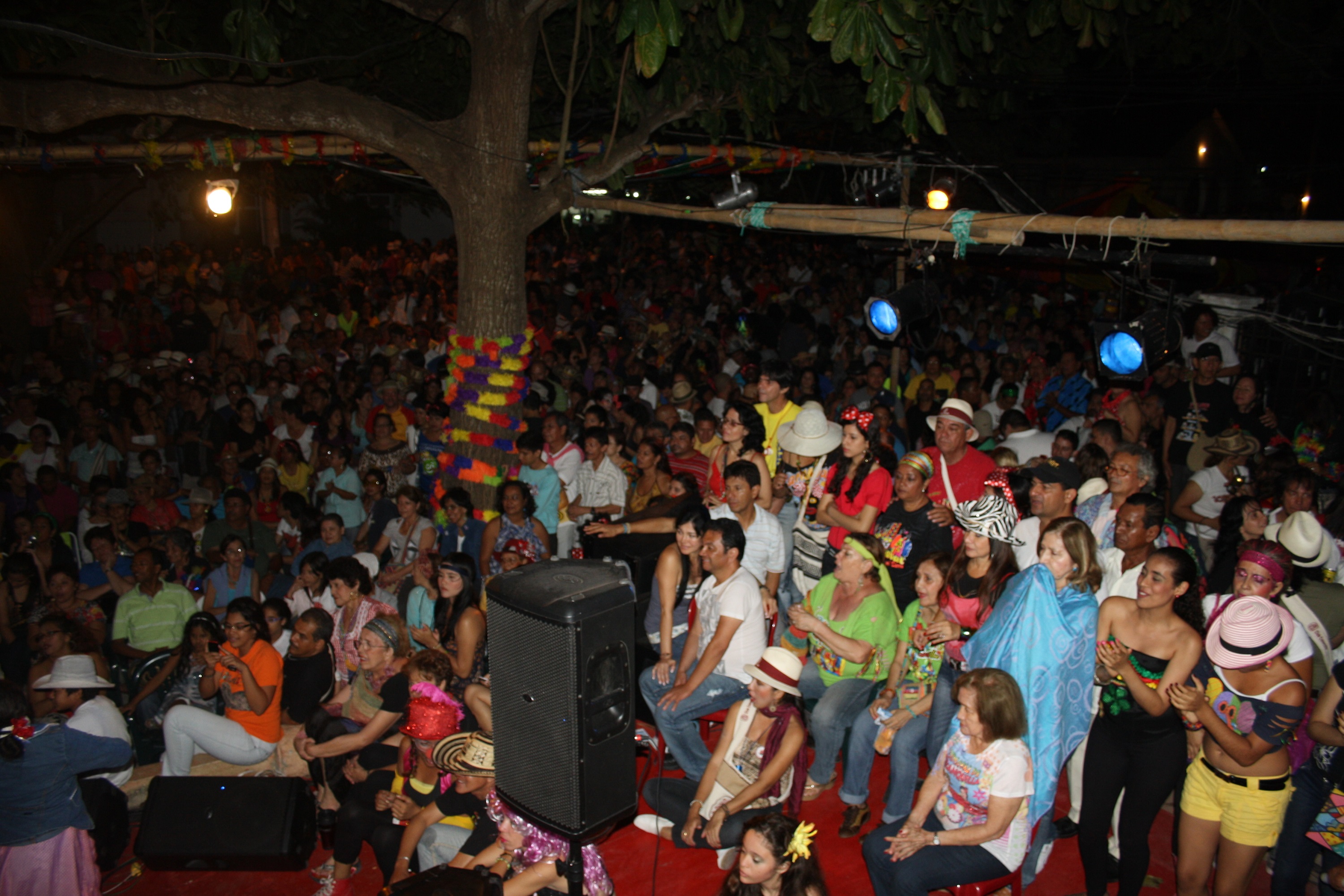

Ay Macondo decided to abandon the parade format, not only because of this event. They had already considered this urgency due to the distortion of the carnival spirit caused by the visual contamination and excessive use of sequins in the costumes. And so, they began to delve into the theatricality of carnival and the carnivalesque in theater.
In 2001, they staged a theatrical production of Cándida Eréndira, which toured several neighborhoods. The variety of audiences that enjoyed this open-air staging confirmed Darío and Mabel's intuition that it was possible to interrupt the fast-paced speed of the parade with a stationary proposal that would give way to a different festive form. Thus arose the dramaturgy of the Carnavalada, which still stands to this day: an initial time frame for the performing arts (folkloric dances and festive theatrical pieces), then a time for concerts of folkloric music groups, and a final part for integration. Here, the public dissolves into participants, thanks to the collective dance animated by a musical selection that includes Colombian music from both coasts, from the greater Caribbean, and African music. For 15 years, the Carnavalada took place in front of Moreu's house—the headquarters of Ay Macondo—in the Bellavista neighborhood, but it grew so much that they had to move it to the public square. First, it went to the Parque Cultural del Caribe, near the downtown, and for the last couple of years, it has been held at the Parque del Sagrado Corazón, in the El Porvenir neighborhood.
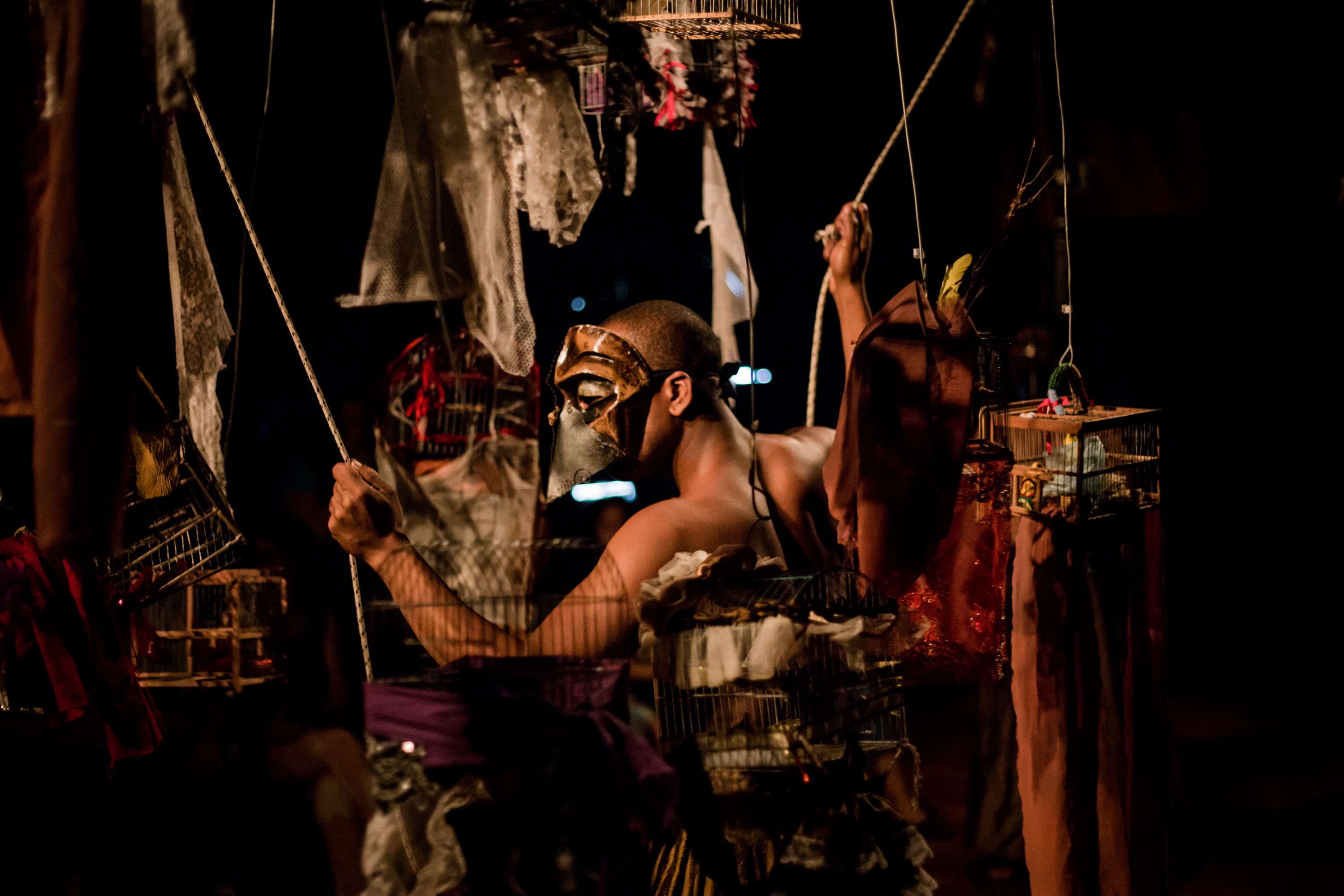
La Tropa de Melquíades is one of the activities carried out by Luneta 50,11 an emblematic organization in Barranquilla, founded by Manuel Sánchez and Zoila Sotomayor. It addresses the question on the specificities of the theatrical comparsa12 that Manuel posed to a group of Colombian performing artists in 2006. They have sustained this poetic and political concern, generating a particular form of collective work and dramaturgical specificity. Every October prior to carnival, the group holds an online meeting to think about the theme of the upcoming comparsa.13 Fifteen days before the start of the carnival, the members travel from all over the country and concentrate on their work: they refine the ideas, build the devices, costumes and disguises. This has also led to the sophistication of what Manuel calls “the dramaturgical breakdown.” The structure of the comparsa is composed of four or five chained modules, each one characterized by an image and a specific sound composed especially for that comparsa.
Until 2011, they paraded along the Via Cuarenta, but since 2012, they joined the parades of the Carnival of the 44th and other municipalities surrounding Barranquilla, such as Puerto Colombia, Palmar de Varela, Galapa, and Santo Tomás. These offer a proximity to the public in their own territory, and the comparseros don’t feel taken advantage of by the organizers of the local carnivals. With this collective learning and the challenge of exposing its uniqueness, Manuel carried out the personal project for Mitav Cada hombre con su pájaro [Each Man with his Bird]. La Tropa collaborated with the same enthusiasm and affection as in previous years.
Cada hombre con su pájaro is the first comparsa devised by this group that doesn’t have a commemorative spirit. It resulted from Manuel Sánchez's attentive look at a cultural phenomenon occurring in Barranquilla: many men walk the streets carrying a cage with a bird inside. So, it consisted of an amplification of a detail of the city. It featured two moments: the first as the comparsa “De hombres y pájaros,” which paraded on February 5, 6, and 7, 2017, in the carnivals of the neighboring municipalities of Barranquilla mentioned above: Puerto Colombia, Palmar de Varela, and Galapa. The second, Cada hombre con su pájaro, as the scenic imprint of the body and sound sensations and objects of the comparsa. It went, then, from the street to the theater. Its achievement was retaining the force of the parade in a closed and static space. This comparsa had an implicit question on masculinities, which has marked their subsequent productions, namely: Supuna Jieyuu: camino de mujeres [Women's Path] (2019-2020).14 In this comparsa, a group of ancestral women from various cultures gather in the face of the imminent extinction of the passing rite of “encierro de la señorita” (enclosure of the young lady) in Wayuu communities, and the stationary staging derived from the latter, Asürülaa: el último encierro [The Last Enclosure] (2023).15
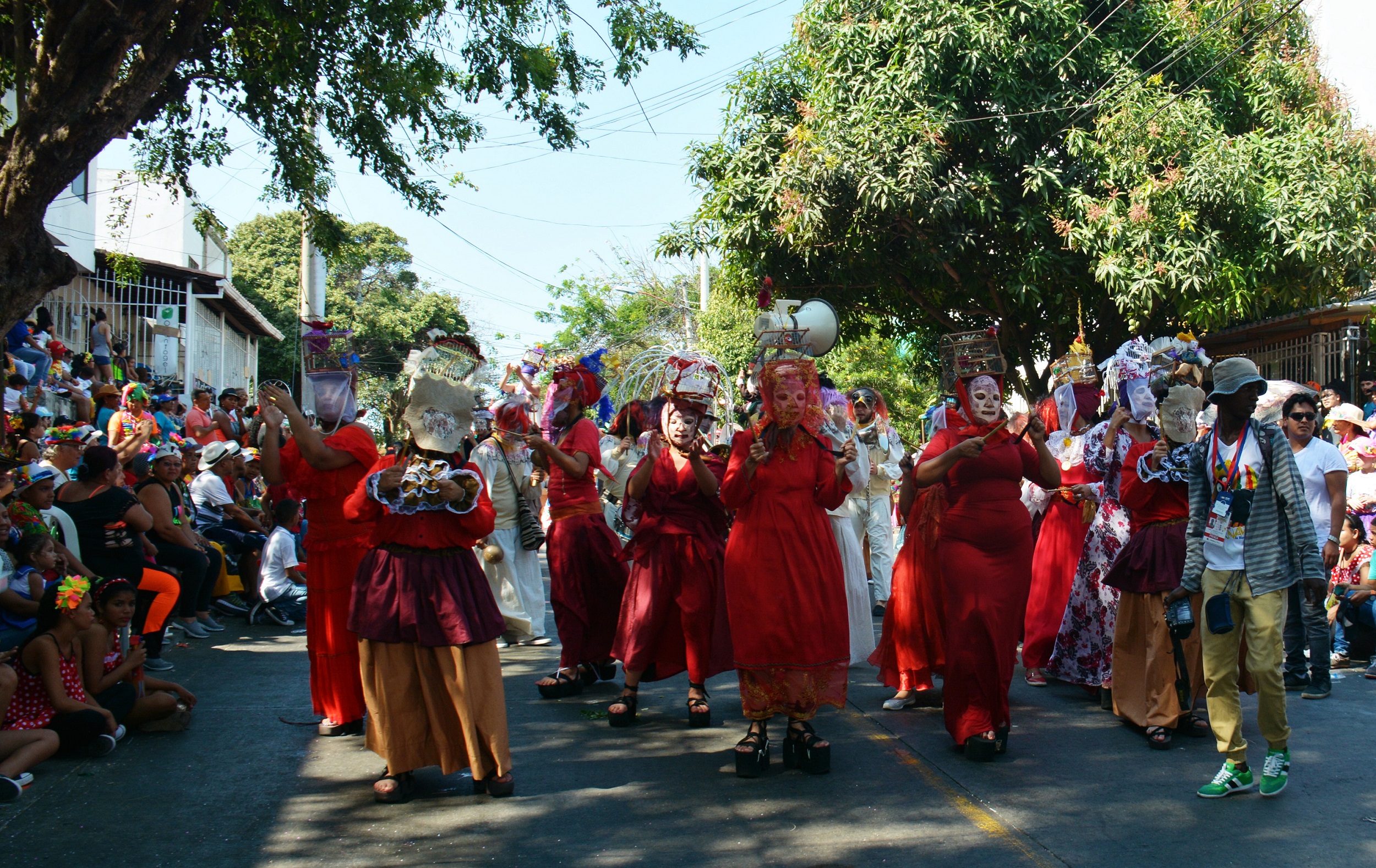


La Nave de Lxs Locxs16 is an interdisciplinary group that emerged in 2019. They aim to emphasize the ritual dimension and the political and resistance spirit of carnival, by highlighting the political importance of bodies and the social spaces they occupy. For them, carnival is a time-space portal that allows for a spiritual encounter between negritudes, Native peoples, and feminist and LGBTIQ+ collectives—it is not a frivolous celebration.
As part of the rescue strategies of the ritual aspect, the collective has promoted meetings with the peasant communities of La Chorrera17—a village located 40 minutes away from Barranquilla—, the Koggi people of the Sierra Nevada de Santa Marta, and the Palenquera community of Las Nieves neighborhood in Barranquilla. They have joined, with utmost respect, the Barrio Arriba community (from the mouth of the river), an area where the bearers of the original traditions of the carnival have lived to this day. Their neighborhoods18 keep alive the popular, democratic, and free essence of the carnival. The Barrio Arriba community nurtures their bonds of trust and is open to the exchange of knowledge and mutual care.19
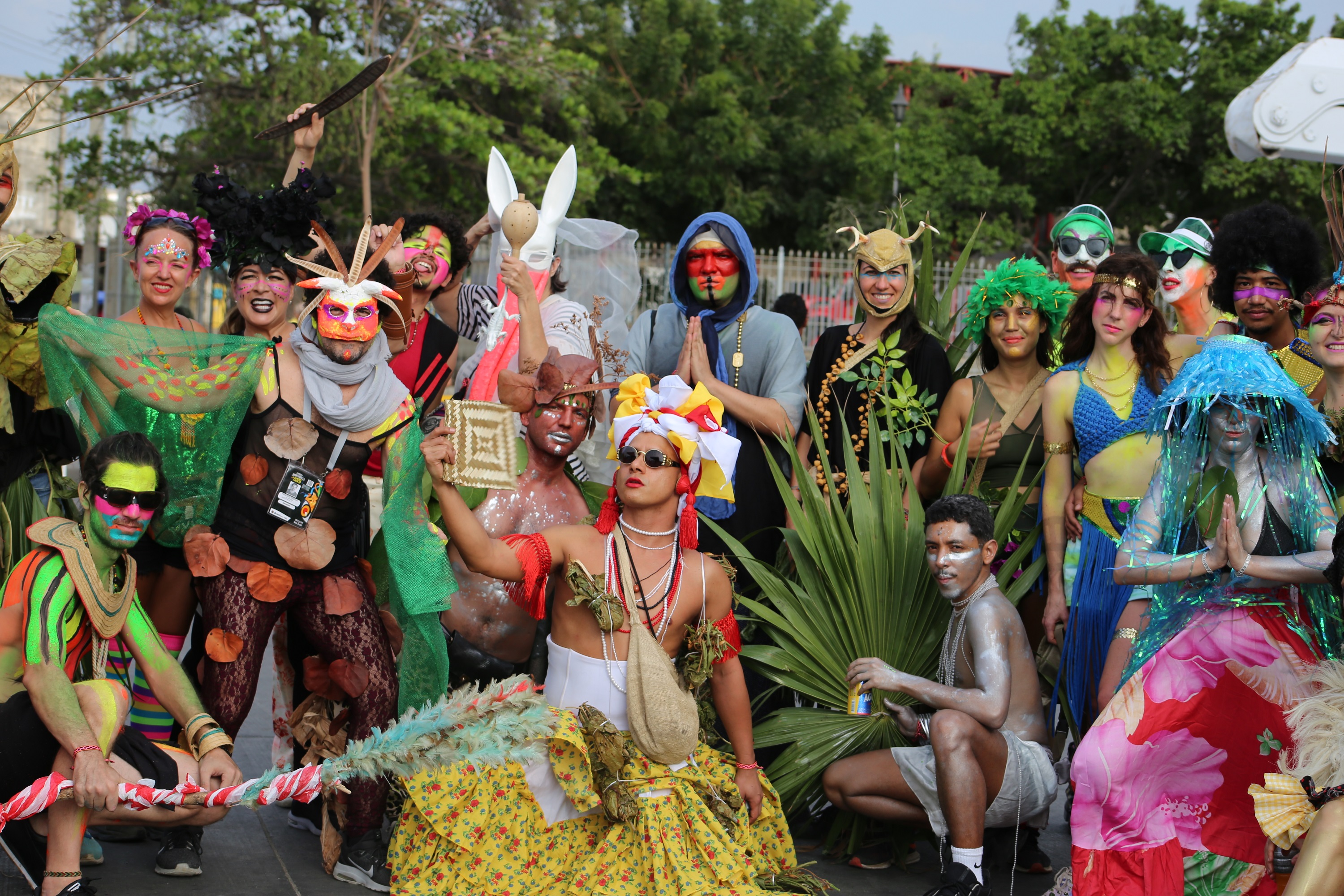
In keeping with this spirit, during the year of confinement due to COVID-19, Carlos María Romero (aka "Atabey Mamasita") clandestinely shot La Nave (2021, 52 mins). In this documentary, he set out to transmit the sensory experience, joy, humor, spirituality, and spontaneity of a carnival that is more participatory than spectacular, such as that of 17th Street in Barrio Arriba, and the spirit of the collective La Nave de Lxs Locxs, to which he belongs.
Finally, this mapping would not be complete without mentioning Travestiario tropical. La sexposición (November 4, 2021, through April 4, 2022), curated by Danny González Cueto.23 Since 2004, Danny has been developing research on the Carnival of Barranquilla, particularly, regarding the participation of the LGBTIQ+ population. He is also part of La Nave de Lxs Locxs.


Considering that homosexuality has been stigmatized by the carnival, these communities have gained recognition thanks to their permanent struggle. Travestiario tropical displayed the affective archives of the corporal practices of the LGBTIQ+ community in the carnival, with an emphasis on the Gay Guacherna.
Through almost 500 pieces—comprising images, texts, press archives, audiovisual media, and objects—it offered visitors a chance to advance in the recognition of differences. To this end, the exhibition activated multiple formats: film forums, poetry recitals, make-up workshops, academic meetings, and a collective performance inspired by La última cena [The Last Supper] by the Chilean collective Las Yeguas del Apocalipsis, formed by Pedro Lemebel and Francisco Casas.24
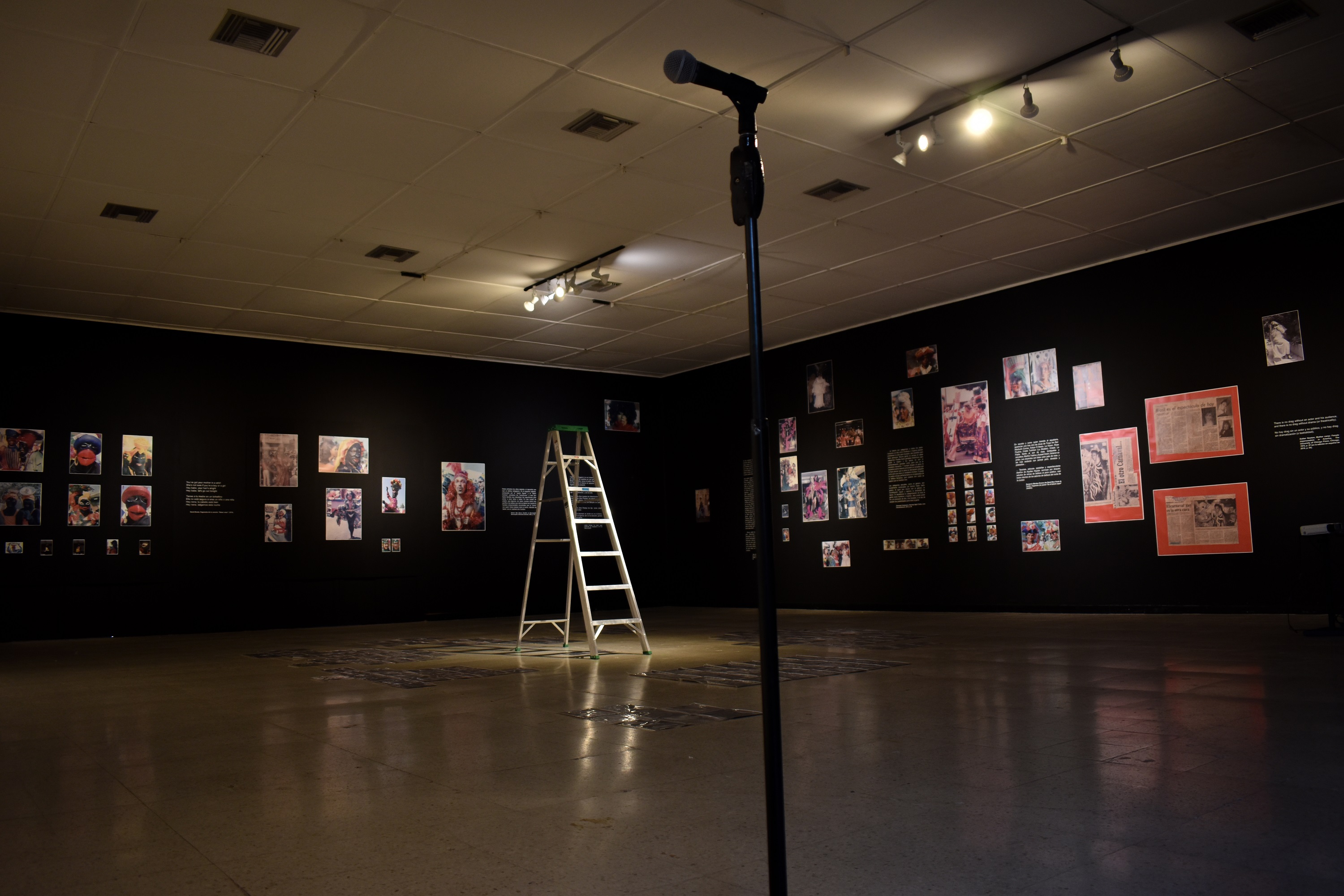

I hope that this very quick overview of collectivities will show how these resistance movements are keeping the carnival spirit alive, in spite of the shattering machinery of its commodification.

